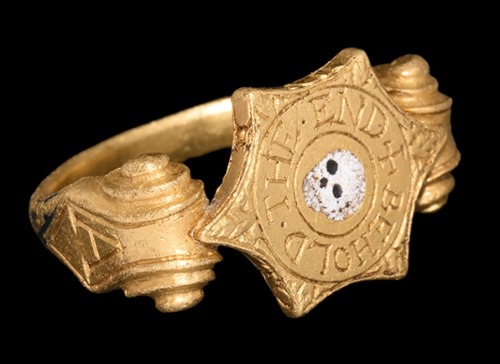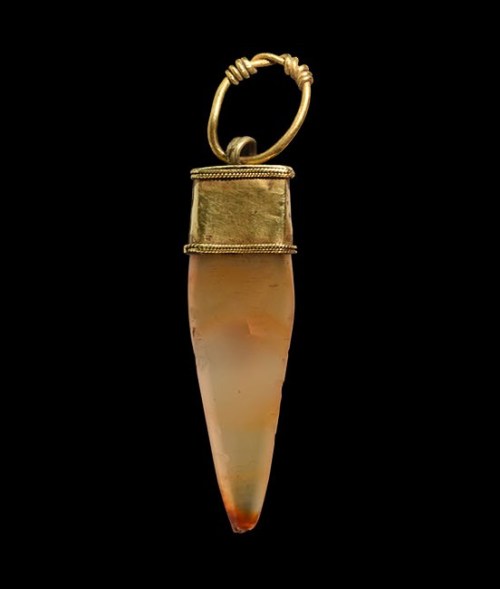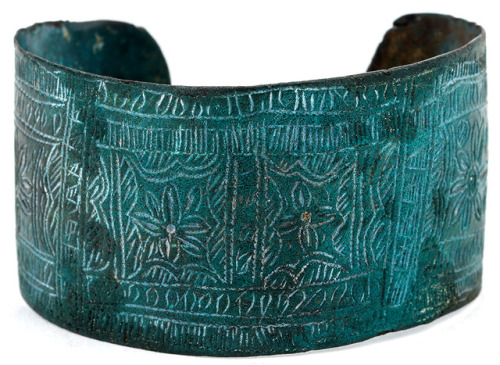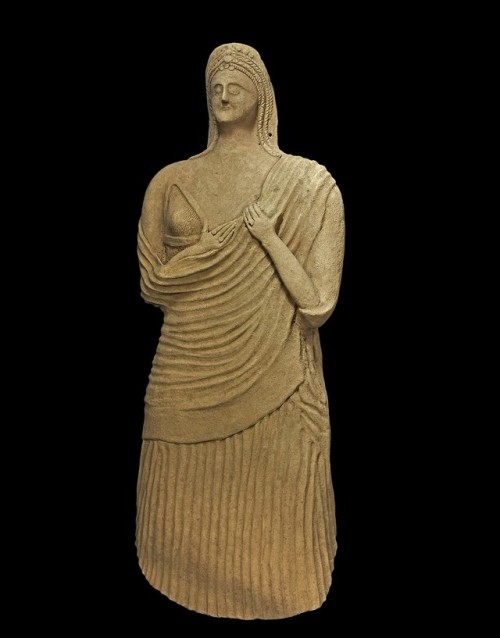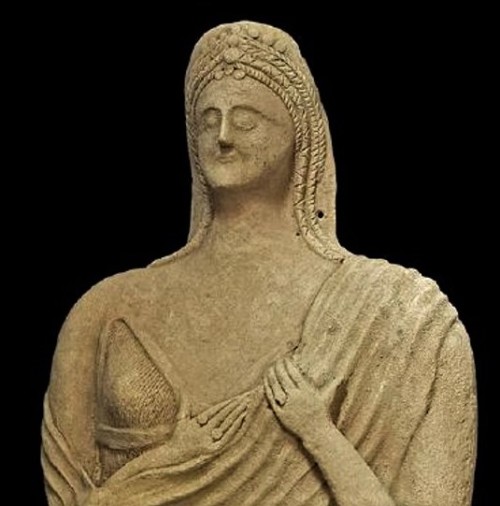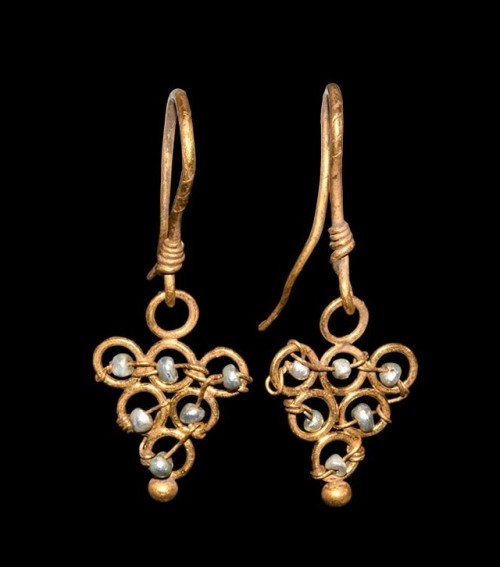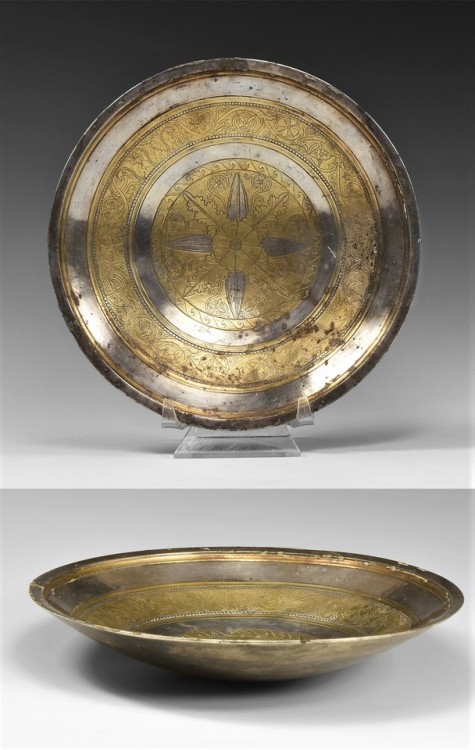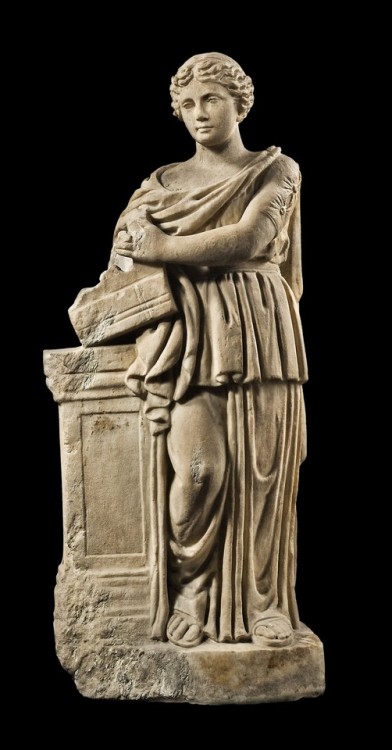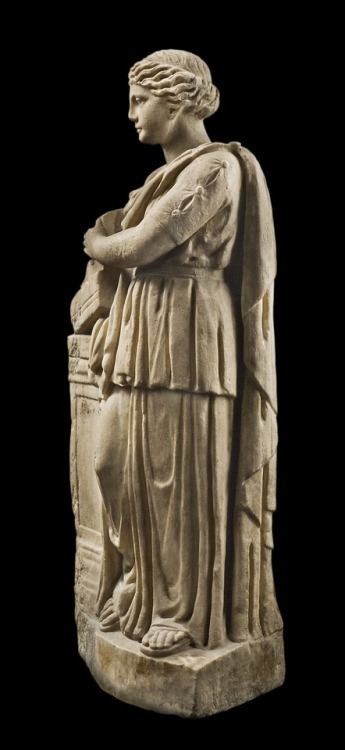Sogdian Nobleman Scepter Finial, Late 1st ML BC
A substantial bronze finial or figurine of a male with hair swept back and held in place by a diadem; large, flat nose, wide eyes and small, pursed mouth; slender body and hands on hips; tang to bottom of waist for attachment. 364 grams, 10cm (4")
Post link
Elizabethan Gold ’+BEHOLD THE END’ Mourning Ring for A N, Late 16th Century AD
A substantial Tudor D-section gold hoop with reserved foliage on black enamel field, scrolled capital to each shoulder and initials ‘A’ and 'N’, the plaque a fluted hexagon with disc, legend to the perimeter ’+DYE TO LYVE’ and disc with ’+BEHOLD.THE.END’ surrounding a white enamel skull in three-quarter view. 17 grams, 26mm overall, 22.07mm internal diameter.
Watchthis video for more info on this ring.
Post link
Viking Gold Elf Shot Pendant, 9th-12th Century AD
A gold ‘elfshot’ amulet with a rectangular cap decorated with applied roped border, securing a smooth agate(?) arrowhead; suspension gold ring to the top. 7.26 grams, 63.7mm including loop (2"). Very rare.
Post link
Medieval Gold ‘Think of me, Love’ Heart-Shaped Ring Brooch, 13th-14th Century AD
A gold ring brooch with loop formed as acorns and oak leaves, the tongue tapered with acorn finial to the hinge; to the reverse, blackletter inscription ’+pence de moy amor’ which translates to 'Think of me, Love’, with rosettes and leaves. 6.67 grams, 27mm (1").
See it on video
Post link
Western Asiatic Silver Jeweler’s Earring Hoard Group, 3rd ML BC
A round section silver ring threaded with twenty three silver earrings of the ‘Navicella’ type consisting of seven silver wires with that to the center with a longer section forming the hoop earwire. 68 grams total, 70mm (2 ¾")
Post link
Late Roman or Byzantine Bronze Bracelet With Stylized Floral Designs, 4th-6th Century AD
Approximately 2 inches in diameter by 1.2 inches high. Six engraved box designs, each box with a stylized floral pattern. Box in middle has four pointed rays, sometimes used to portray the holy cross; the other have six to eight rays, used as the holy fish symbol to mark one’s faith.
Post link
Roman Single-Handle Fluted Jug, 4th-5th Century AD
Mould-blown body with vertical fluting and applied neck and handle. Exhibits intense opalized sea-green and sky-blue iridescence. 4.5 inches (11.4cm) high
Post link
Greek Terracotta Standing Kore, 6th-5th Century BC
A hollow-formed terracotta kore with modeling to the front and sides, wearing a draped robe with pleated lower section and fold across the chest and left shoulder; ribbed and banded undergarment to the chest; elaborate braided hairstyle with pellets, finely modeled face with piercings beside the neck; hands raised to the left breast with three finger rings. 23 kg, 105cm (41 ¼")
The piece displays styles of Eastern Greek workmanship, possibly from one of the Greek islands, Cyprus, or one of the Greek colonies such as Cyrenaica, and is that of a kore (pl. korai), the name given to a type of free-standing ancient Greek sculpture of the Archaic period depicting female figures, always of a young age. They show the restrained “archaic smile”, but, unlike the nude male kouroi, the korai are depicted in thick drapery, ornate, and in painted examples very colorful. They often have elaborate braided hairstyles. There are a number of theories as to whom they represent with the most popular being that of the goddess Persephone as some are shown holding a pomegranate, a fruit associated with the goddess of the Eleusinian Mysteries.
Another theory is that they represent images of wealthy patrons and were set up in temples as offerings to the gods and to be a constant presence before the deity. Korai are found in most of the ancient cities of the Greek world, with the most famous being those from the Acropolis in Athens. Although they show a similarity in form with the arms either by the side or held up and holding a votive offering, the clothes reveal regional styles and the fashions of the elite in archaic Greek society.
Post link
Hellenistic Gilt Silver Bowl with Complex Ornament, 2nd-1st Century BC
A shallow silver bowl with thickened chamfered rim, concentric gilt bands, one with reserve scrolled vines with bunches of grapes on a textured field; central disc with octofoil and four radiating leaves, coiled tendrils on a pointillé textured field with running wave border. 254 grams, 17.5cm (6 ¾".
Watch it described on youtube
Post link






